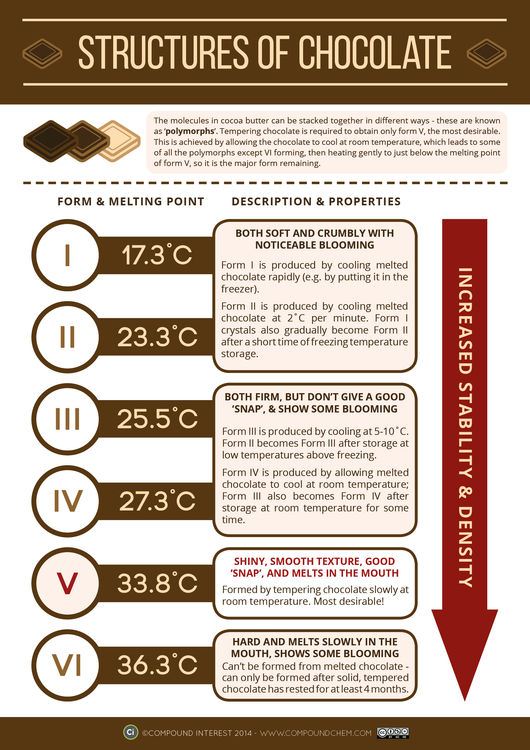© Compound InterestThe Polymorphs of Chocolate
With Easter upcoming, here’s another graphic on chocolate to go with the previous food chemistry graphic which looked at some of the chemicals it contains. This one examines the different structures of chocolate, why the tempering process is important to produce the highest quality chocolate – and why you shouldn’t leave your Easter chocolate lying around for months before eating it.
Cocoa butter is the primary ingredient in chocolate; it is composed primarily of fat molecules, and how these fat molecules are arranged determines the structure of chocolate. The molecules themselves don’t change at all in these different structures; what does change is how they are arranged or stacked together. The more efficiently they are stacked together, the higher the density of the structure formed, and the more stable.
Cocoa butter has at least six different structures, or ‘crystal forms’; the ability of a substance to display different structures is known as ‘polymorphism’. These crystal structures differ in how the molecules are arranged, which in turn influences their properties, such as appearance, taste, and texture. These, additionally, can affect the taste and quality of the chocolate, so it’s an important factor to consider for chocolate makers.







